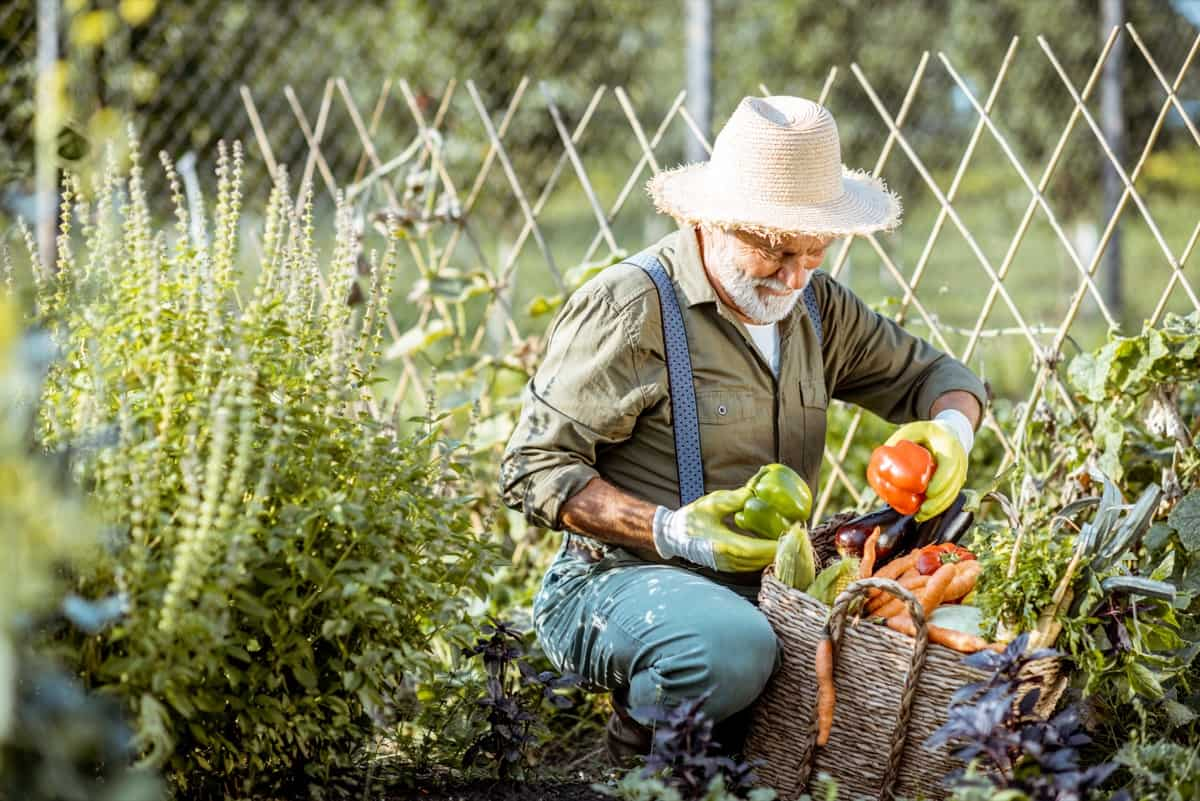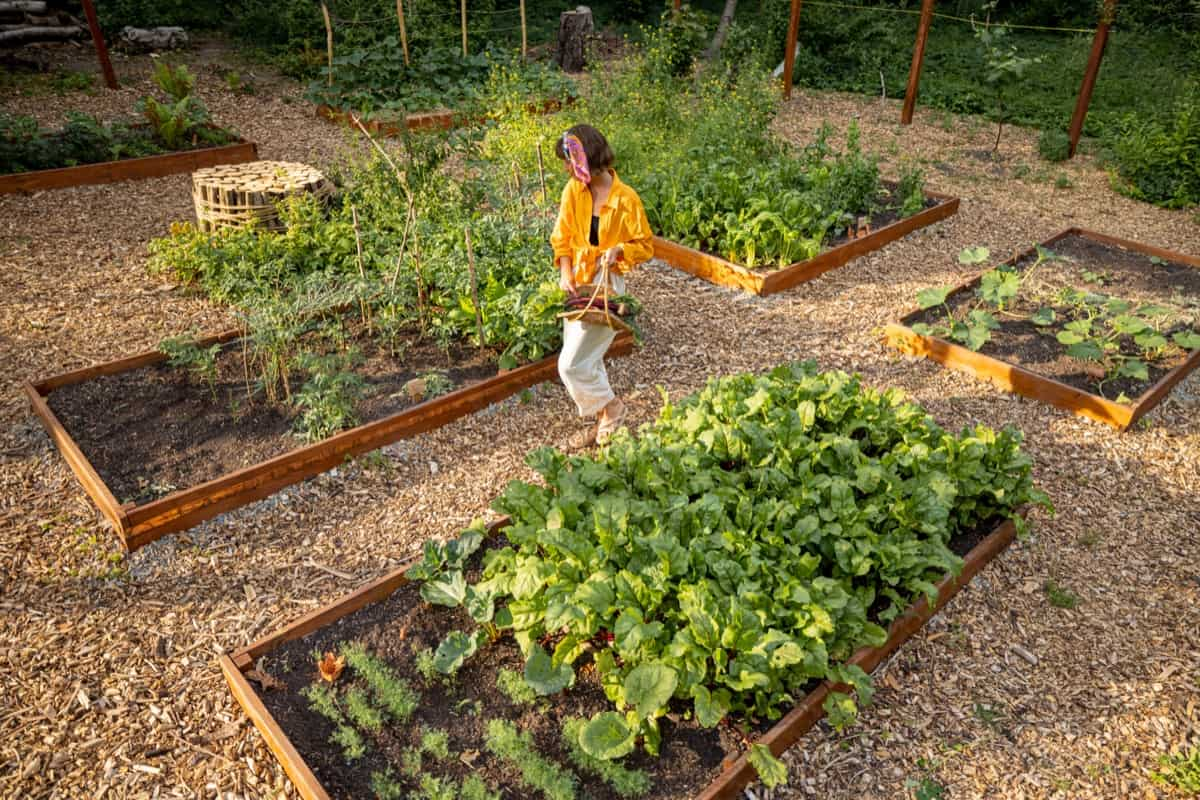Fall vegetable gardening involves cultivating crops that thrive in cooler temperatures. It extends the growing season, allowing you to harvest fresh produce even as temperatures drop. Cool-season vegetables like lettuce, spinach, and radishes are ideal for fall planting. Success depends on soil quality, sunlight, and proper care. Adequate watering, mulching, and pest control are essential. By planning your garden carefully and selecting the right varieties, you can enjoy a bountiful harvest well into autumn.

How to Plant a Fall Vegetable Garden in 10 Steps
Choosing the Right Location for Your Fall Vegetable Garden
The perfect location for your fall vegetable garden is crucial for a successful harvest. Look for a site with at least 6-8 hours of direct sunlight daily. Full sun exposure ensures plants receive the light they need for optimal growth and productivity. Additionally, choose a spot with well-drained soil to prevent waterlogging, which can harm your crops. Test the soil’s pH and fertility and amend it with compost or organic matter to create a nutrient-rich foundation for your plants.
Consider shelter from strong winds, as windy conditions can damage delicate fall crops. A location near a windbreak, such as a fence or a row of shrubs, to provide protection. Lastly, ensure the garden is easily accessible for regular maintenance, watering, and harvesting. With the right location, your fall vegetable garden will thrive and provide a plentiful harvest as temperatures cool.
Preparing the Soil for Your Fall Vegetable Garden
Preparing the soil for your fall vegetable garden is critical to ensure the success of your crops. Start by testing the soil’s pH and nutrient levels to understand its composition better. Most fall vegetables thrive in slightly acidic to neutral soil (pH 6.0-7.0). Amend the soil with vermicompost or well-aged manure to improve its fertility and structure. This provides essential nutrients and helps the soil retain moisture.
Consider incorporating any necessary micronutrients based on your soil test results. Remove weeds and debris from the area to reduce competition for nutrients and ensure your vegetables grow unhindered. Use a garden fork or tiller to work the organic matter into the soil to a 6-8 inches depth. Smooth the surface and create raised rows or beds if drainage is a concern. Proper soil preparation sets the stage for healthy, robust fall vegetable growth and a bountiful harvest.
Selecting the Ideal Vegetables for Fall Planting
Selecting the ideal vegetables for fall planting is essential to ensure a productive and successful autumn garden. Fall vegetables are typically cool-season crops that thrive in the milder temperatures of late summer and early fall. Here are some excellent options.
- Leafy Greens: Varieties like lettuce, spinach, kale, and Swiss chard are perfect for fall. They can withstand light frosts and provide nutritious greens for salads and cooking.
- Root Vegetables: Carrots, beets, radishes, and turnips are cold-hardy and develop sweeter flavors as temperatures drop.
- Brassicas: Broccoli, cauliflower, and Brussels sprouts do well in the fall. Plant them early enough to allow them to mature before the harshest cold sets in.
- Alliums: Onions, garlic, and leeks can be planted in the fall for a spring harvest.
- Peas: Certain pea varieties thrive in cooler weather and can be sown for a late-season crop.
- Herbs: Parsley, cilantro, and chives can be grown throughout the fall.
In case you missed it: How to Control Fall Armyworm in Sorghum: Identification and Symptoms

Starting Seeds Indoors for Your Fall Vegetable Garden
Begin your fall vegetable garden by starting seeds indoors. Use seed trays or pots filled with a high-quality seed-starting mix. Sow seeds at the recommended depth and keep them in a warm, well-lit area. Provide adequate moisture and maintain a consistent temperature for germination. Once seedlings have grown sturdy enough, typically after 4-6 weeks, they’ll be ready for transplanting outdoors.
Transplanting Seedlings into Your Fall Vegetable Garden
When transplanting seedlings into your fall garden, choose a cloudy day in the late afternoon to reduce transplant shock. Dig holes a bit larger than the root balls and space plants according to their recommended distances. Gently remove seedlings from their pots, careful not to damage the roots.
Please place them in the holes and backfill with soil, pressing gently around the base. Water thoroughly to help settle the soil and immediately hydrate the plants. Mulch around the transplants to retain moisture and protect against temperature fluctuations. Monitor them closely in the initial days for any signs of stress.
Providing Adequate Water and Drainage for Your Fall Vegetable Garden
Maintaining proper water and drainage is crucial for a thriving fall vegetable garden. Consistently water, ensuring the soil remains evenly moist but not soggy. Early morning is the best time to water, allowing plants to absorb moisture before the day’s heat. Use a soaker hose or incorporate a drip irrigation system to target the roots directly, minimizing evaporation.
Ensure your garden has proper drainage to prevent waterlogged soil, which may cause root rot and other issues. If your soil retains water, consider incorporating organic matter to improve drainage. Additionally, using raised beds or mounded rows can help promote better drainage. Regularly monitor moisture levels and adjust your watering schedule based on weather conditions. Adequate water and drainage will contribute to healthy, robust plants throughout fall.
Implementing Pest Control Measures in Your Fall Vegetable Garden
Employ integrated pest management (IPM) techniques to protect your fall vegetable garden. Begin by regularly inspecting plants for signs of pests like holes in leaves, discolored foliage, or insect activity. Use natural predators like ladybugs or lacewings to keep pest populations in check. Consider applying insecticidal soaps or neem oil for non-toxic control.
In case you missed it: Perennial Flowers that Bloom from Spring to Fall: For Full Sun and Shade

Companion planting with herbs like basil, mint, or marigolds can deter pests. Additionally, introducing physical barriers like row covers or netting can prevent insects from accessing vulnerable plants. Hand-picking larger pests, such as caterpillars or beetles, is an effective, eco-friendly method. Stay vigilant and address issues promptly to keep your fall garden thriving.
Maintaining and Caring for Your Fall Vegetable Garden
Maintaining your fall vegetable garden involves regular attention to ensure healthy growth. Monitor soil moisture levels, adjusting your watering schedule as needed. Remove any weeds to prevent competition for nutrients and water. Inspect plants for signs of disease or pest infestations and take appropriate action if needed.
Apply organic mulch to conserve moisture, regulate soil temperature, and suppress weeds. Support taller plants such as tomatoes or peppers to prevent bending or breakage. As the season progresses, continue fertilizing if necessary, following recommended guidelines. Your fall garden will thrive and yield a bountiful harvest with proper care and attention.
Harvesting and Enjoying the Fruits of Your Fall Vegetable Garden
Harvesting from your fall vegetable garden is a rewarding culmination of your efforts. Begin by using sharp, clean tools to gather mature crops carefully. Harvest leafy greens like lettuce and spinach by removing outer leaves, allowing the center to grow. Rooted vegetables like beets and carrots can be gently pulled or dug from the soil. For brassicas like broccoli and cauliflower, cut the central head when it reaches full size, allowing side shoots to develop. Harvest herbs like basil and parsley by snipping stems, encouraging continuous growth.
Table for Creating a Fall Vegetable Garden in 10 Easy Steps
| Requirement | Description |
| Location | Consider a sunny spot with at least 6 hours of sunlight per day. |
| Soil Preparation | Prepare well-draining soil with organic matter and good fertility. |
| Plant Selection | Select suitable cool-season vegetables like broccoli, kale, carrots, and lettuce. |
| Planting Schedule | Plant in late summer to early fall, depending on your region’s climate. |
| Watering and Fertilization | Apply a balanced fertilizer based on soil test results or use compost. |
| Pest Management | Monitor for pests and use appropriate organic or chemical controls if necessary. |
| Disease Prevention | Practice crop rotation and good garden hygiene to reduce disease risk. |
| Mulching | Apply mulch to conserve moisture, regulate soil temperature, and suppress weeds. |
| Frost Protection | Be prepared to cover plants if frost is expected, as some vegetables are frost-sensitive. |
| Harvesting | Harvest crops at the right maturity to ensure best flavor and quality. |
In case you missed it: Best Vegetables to Grow in Colorado: for Summer, Winter, Spring, and Fall Seasons

Conclusion
Remember that fall gardening often requires protection from frost. Be prepared to protect your plants with frost cloth or blankets if cold weather threatens. You can enjoy a bountiful fall harvest from your vegetable garden with proper planning and care.
- Feed Your Flock for Less: Top 10 Tips to Save on Chicken Feed
- Ultimate Guide to Ossabaw Island Hog: Breeding, Raising, Diet, and Care
- Hatching Answers: The Top 10 Reasons Your Chickens Aren’t Laying Eggs
- Eggs and Economics: Breaking Down the Cost of Raising Backyard Chickens
- Defend Your Greens: Proven Methods to Keep Iguanas Out of Your Garden
- Ultimate Guide to Cinnamon Queen Chicken: A Comprehensive Guide for Beginners
- Ultimate Guide to California Tan Chicken: Breeding, Raising, Diet, Egg-Production and Care
- Ultimate Guide to Marsh Daisy Chicken: Breeding, Raising, Diet, and Care
- 10 Types of Chicken Farming Businesses You Can Start for Profits